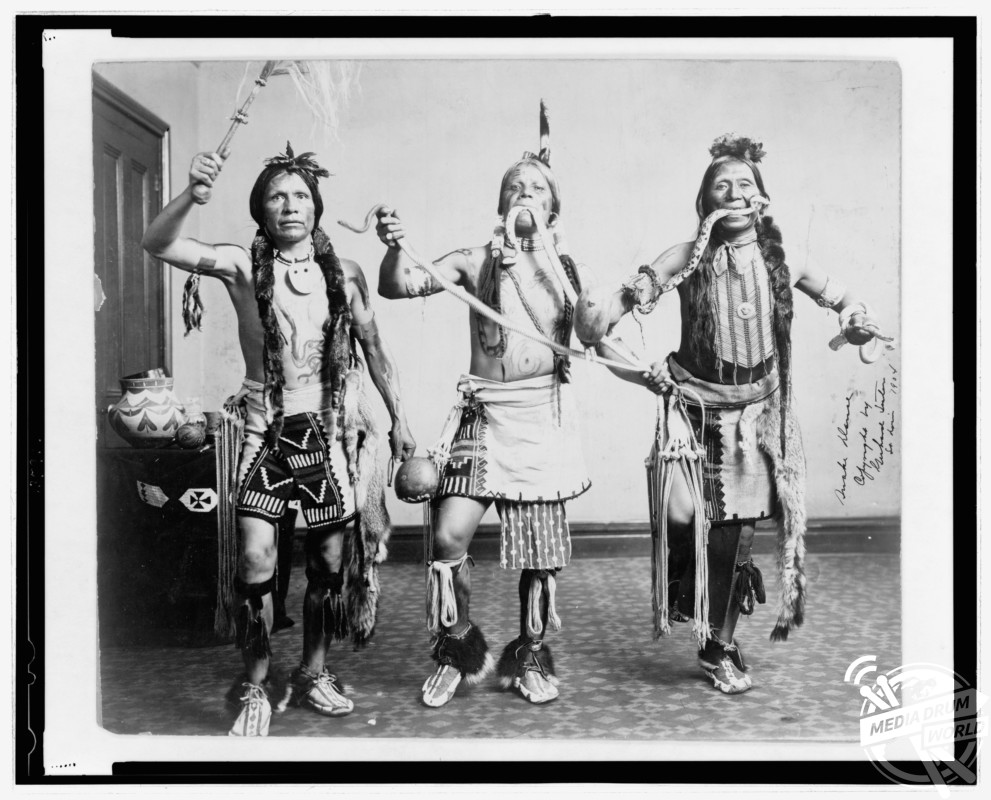
By Tom Dare
A SERIES OF FASCINATING images documenting some of the hostilities between Native Americans and white settlers in North America over a 50-year period have resurfaced today, on the 100th anniversary of the last conflict between Native American tribes and American settlers.
Images show several Native Americans from various tribes across America, including members of the Yaqui, Sioux, Apache, Tesuque, and Potawatomi tribes. The pictures, most of which were taken between 1865 and 1915, show the Natives fishing, hunting and performing ritualistic dances.

Further images from the collection show the lesser-seen side of the relationship between Native Americans and American settlers, with shots showing a group of six Yaqui Indians who had been lynched, as well as pictures of Mormon settlers who were scalped by the Natives.
The collection has emerged on the centenary of the Battle of Bear Valley, the last recorded conflict between the United States Army and a group of Native Americans in Arizona, the Yaqui. Though only brief and resulting in just one death, it is seen as potentially being the end of the American Indian Wars which stretch back as far as the ‘first settlers’ in America in 1540.

Conflicts between settlers and the Natives between 1540 and 1774 were often confined to clashes between individual colonies and the tribes that inhabited the same area as them. Such conflicts included the almost complete annihilation of the Jamestown colony by the Powhatan’s in 1622, as well as the destruction of the Pequots by Puritan forces in New England in 1637. Native tribes also got pulled in to the battle for supremacy in North America between the French, the British and the Spanish, with tribes often siding with whichever country they happened to be trading with.
America’s victory in the War of Independence in 1776 saw the nature of conflicts on the continent shift from state-based to land-based, with some of the largest wars between the two sides taking place over land (the war of 1812 aside). One of these was the second Seminole War in 1835 between Americans, who wished to settle in Florida, and the Seminole’s, who saw Florida as their ancestral homeland. A huge campaign was launched against the Seminole’s after they refused to relocate to a reservation in Oklahoma, with raids against the Natives and laws being passed ordering them to leave. The tribe remained stubborn, costing the Americans an estimated $30 million dollars.

As the settlers began to move west of the Mississippi and onto the Great Plains in the 1840s tensions between them and the Natives only heightened. Tribes such as the Sioux, Arapache, Cheyennes and the Arapaho’s were all based in this area, which attracted millions of people during the California gold rush of the mid-1800s. Clashes between the two groups intensified during this time, with several regiments using the American Civil War as an excuse to slaughter tribes and force them onto reservations.

1876 saw perhaps the last great battle between Native American tribes and the United States army, with the Battle of Little Bighorn leading to the death of General Custer. He and five troops of his cavalry were annihilated in the battle, which was waged by a loose coalition of Indian tribes led by Sitting Bull and Crazy Horse. Persistent raids against Native villages, stockpiles and food sources left its mark on tribes across the country, though. With far inferior technology to the Americans, the vast majority of tribes were forced to accept life on the reservations. This sadly did not end the bloodshed, though, as approximately 300 Natives, mostly old men, women and children, were slaughtered by American forces during the Wounded Knee massacre in 1890.

There were still to be a few skirmishes across the continent, as Americans continued to spread across the country and force the Natives onto smaller and smaller reserves. The last of these was the Battle of Bear Valley, which saw one Yaqui commander and nine tribe members captured by American forces on January 9 1918.




